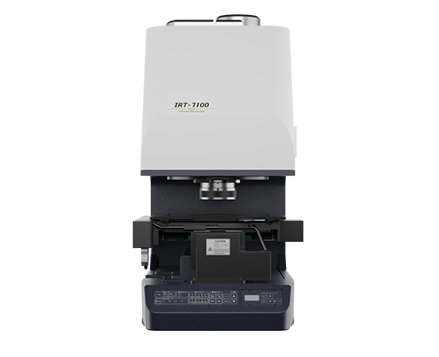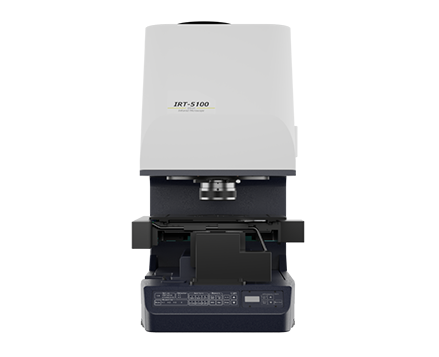Microplastics Identification by IR Imaging Measurement
April 25, 2024
Introduction
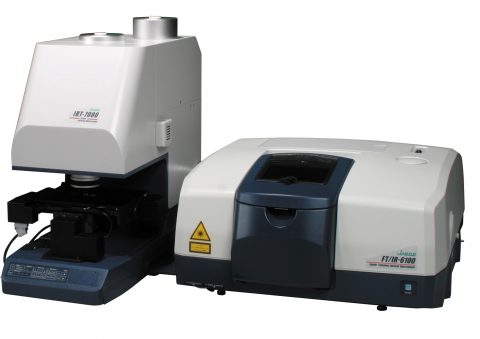 Plastic debris in marine environment has become a serious concern in recent years, impacting health & safety and environmental ecosystems. Microplastics have been found in fish, shellfish, bottled water and more recently salt from marine sources. Microplastics are generally defined as particles smaller than 5 mm. The amount, type of plastic and impact on natural ecosystem are actively being investigated. These plastics, which are difficult to observe by the naked eye, are assumed to originate from additives in cosmetics, such as facial cleansers, toothpastes, or from the break up of larger plastic materials during long periods of drifting in the oceans.
Plastic debris in marine environment has become a serious concern in recent years, impacting health & safety and environmental ecosystems. Microplastics have been found in fish, shellfish, bottled water and more recently salt from marine sources. Microplastics are generally defined as particles smaller than 5 mm. The amount, type of plastic and impact on natural ecosystem are actively being investigated. These plastics, which are difficult to observe by the naked eye, are assumed to originate from additives in cosmetics, such as facial cleansers, toothpastes, or from the break up of larger plastic materials during long periods of drifting in the oceans.
The objective of this application note is to demonstrate IR microscopy as an effective and rapid assessment tool to identify and characterize microplastics in water. Using IR microscopy, microplastics can be measured without elaborated pretreatment, and the type of plastic can be easily identified using FTIR databases. In addition, using IR imaging, it is possible to calculate the distribution ratio and measure the particle size.
Experimental
Microplastics in water were collected in a filter (material: Teflon), and IR imaging measurement was carried out. The measurement conditions are as follows.
| Instruments | FT/IR-6600 Fourier transform infrared spectrometer IRT-7200 Multichannel infrared microscope |
| Measurement Mode | Transmission |
| Detector | Linear array detector |
| Resolution | 8 cm -1 |
| Accumulation | 16 times |
| Measurement Area | 800 x 800 µm |
| Measurement Points | 64 x 64 points |
| Measurement Time | About 15 minutes |
Keywords
100-MT-0256, Microplastics
Results

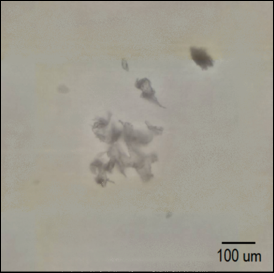
Fig. 1 shows spectra obtained by IR imaging measurement with database search results, Fig. 2 is the microscopic image of the measured area and Fig. 3 is the chemical image created from the key band peaks indicated by red and green arrows.
As a result of the database search, it was found that the plastics in the microscope image are polystyrene (PS) and polyethylene terephthalate (PET). A Teflon peak was also detected in the spectrum this was from the Teflon sampling filter. The distribution of each plastic component was shown by creating a chemical image from key functional groups.
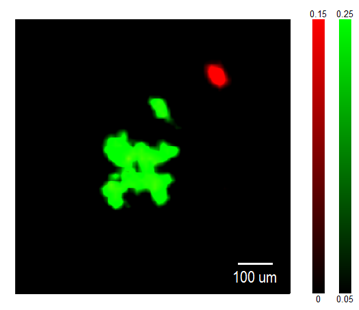
Conclusion
Two different type of plastics were identified using IR imaging measurement.
Currently, microplastics are generally defined as particles of less than 5 mm, but analysis of microplastics at even smaller sizes is also required. The measurement with IR microscopy is typically recommended for particles of more than 10 µm, and Raman microscopy is more effective for particles smaller than 10 µm.
JASCO has developed a convenient accessory called IQ frame that can measure exactly the same observed area easily and quickly with both IR and Raman microscopes, the combination of these complementary analytical techniques is expected to become an effective analysis methodology.
Featured Products:

Microplastics Identification by IR Imaging Measurement
Introduction
 Plastic debris in marine environment has become a serious concern in recent years, impacting health & safety and environmental ecosystems. Microplastics have been found in fish, shellfish, bottled water and more recently salt from marine sources. Microplastics are generally defined as particles smaller than 5 mm. The amount, type of plastic and impact on natural ecosystem are actively being investigated. These plastics, which are difficult to observe by the naked eye, are assumed to originate from additives in cosmetics, such as facial cleansers, toothpastes, or from the break up of larger plastic materials during long periods of drifting in the oceans.
Plastic debris in marine environment has become a serious concern in recent years, impacting health & safety and environmental ecosystems. Microplastics have been found in fish, shellfish, bottled water and more recently salt from marine sources. Microplastics are generally defined as particles smaller than 5 mm. The amount, type of plastic and impact on natural ecosystem are actively being investigated. These plastics, which are difficult to observe by the naked eye, are assumed to originate from additives in cosmetics, such as facial cleansers, toothpastes, or from the break up of larger plastic materials during long periods of drifting in the oceans.
The objective of this application note is to demonstrate IR microscopy as an effective and rapid assessment tool to identify and characterize microplastics in water. Using IR microscopy, microplastics can be measured without elaborated pretreatment, and the type of plastic can be easily identified using FTIR databases. In addition, using IR imaging, it is possible to calculate the distribution ratio and measure the particle size.
Experimental
Microplastics in water were collected in a filter (material: Teflon), and IR imaging measurement was carried out. The measurement conditions are as follows.
| Instruments | FT/IR-6600 Fourier transform infrared spectrometer IRT-7200 Multichannel infrared microscope |
| Measurement Mode | Transmission |
| Detector | Linear array detector |
| Resolution | 8 cm -1 |
| Accumulation | 16 times |
| Measurement Area | 800 x 800 µm |
| Measurement Points | 64 x 64 points |
| Measurement Time | About 15 minutes |
Keywords
100-MT-0256, Microplastics
Results


Fig. 1 shows spectra obtained by IR imaging measurement with database search results, Fig. 2 is the microscopic image of the measured area and Fig. 3 is the chemical image created from the key band peaks indicated by red and green arrows.
As a result of the database search, it was found that the plastics in the microscope image are polystyrene (PS) and polyethylene terephthalate (PET). A Teflon peak was also detected in the spectrum this was from the Teflon sampling filter. The distribution of each plastic component was shown by creating a chemical image from key functional groups.

Conclusion
Two different type of plastics were identified using IR imaging measurement.
Currently, microplastics are generally defined as particles of less than 5 mm, but analysis of microplastics at even smaller sizes is also required. The measurement with IR microscopy is typically recommended for particles of more than 10 µm, and Raman microscopy is more effective for particles smaller than 10 µm.
JASCO has developed a convenient accessory called IQ frame that can measure exactly the same observed area easily and quickly with both IR and Raman microscopes, the combination of these complementary analytical techniques is expected to become an effective analysis methodology.

 Download This Application
Download This Application